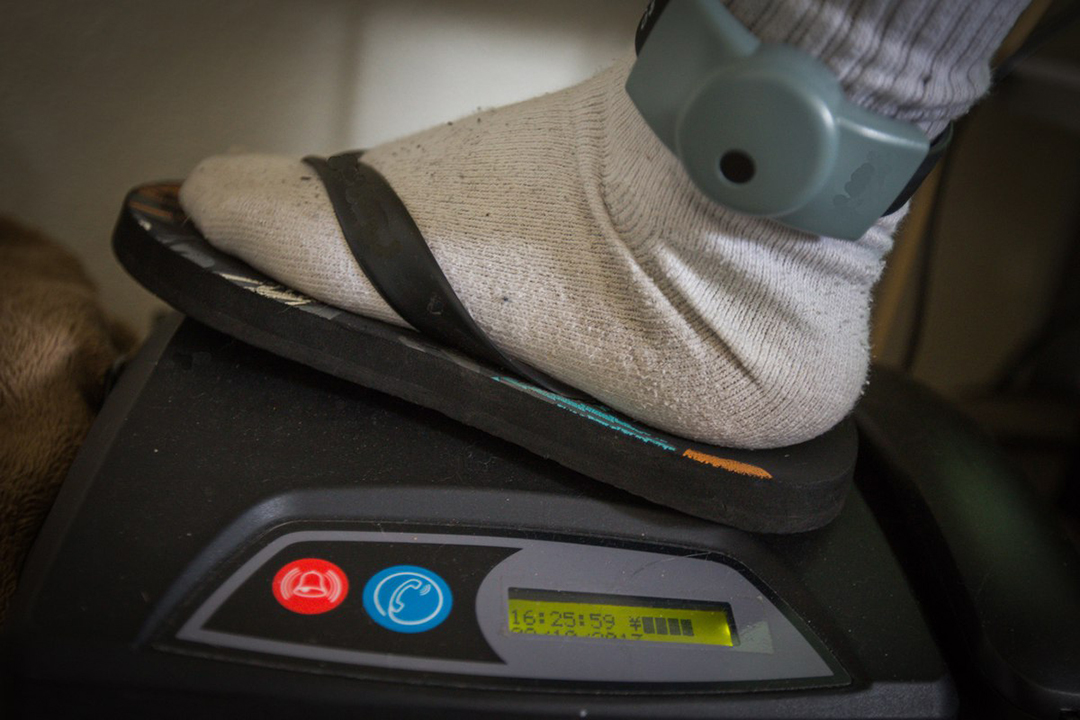Contrary to the common perception that use of GPS-equipped ankle monitors offers a more humane alternative to imprisonment, a new report from George Washington University says that use of the monitors may cause many of the same harms associated with traditional incarceration.
The use of ankle monitors, a surveillance technology widely used to track people on pretrial release, probation and parole, has increased dramatically during the COVID pandemic.
The report by Kate Weisburd, an associate professor at GW Law, and a team of GW Law students finds that electronic monitoring deprives people of certain fundamental rights. It violates basic privacy norms, jeopardizes employment, undermines family and social relationships and diverts wealth from more productive channels.
“Unlike traditional models of probation and parole, GPS ankle monitors are more intensive, restrictive and dependent on private surveillance companies that are driven by profit,” said Ms. Weisburd, whose primary legal interests are in criminal investigation, adjudication and post-conviction law as they relate to civil rights, and in the street-level implications of criminal justice reform for historically marginalized groups.
“Our report finds that electronic surveillance is not an alternative to incarceration; it is an alternative form of jail and prison,” Ms. Weisburd said.
Ten GW Law students—Varun Bhadha, Matthew Clauson, Jeanmarie Elican, Fatima Khan, Kendall Lawrenz, Brooke Pemberton, Rebecca Ringler, Jordan Schaer, Mikayla Sherman and Sarah Wohlsdorf—joined Ms. Weisburd as co-authors of the report, “Electronic Prisons: The Operation of Ankle Monitoring in the Criminal Legal System.”
The research team collected and analyzed records from 101 agencies across 44 states and in Washington, D.C. These records included policies, terms and contracts governing the use of electronic monitoring for people on pretrial release, probation and parole.
People ordered to wear electronic monitors are often required to remain in their homes unless they obtain approval to leave. Such approval often must be sought days in advance and is inconsistently granted even for the most routine activities. The result, according to the report’s authors, is that people wearing ankle monitors become prisoners in their own homes.
Privacy for those wearing ankle monitors is practically nonexistent, since the monitors capture, analyze and store months of location and movement data, often sharing it with law enforcement agencies and the courts, the report says. Most of the policies reviewed by the research team did not provide any privacy protections or rules governing use of data. The privacy of family and friends is also affected through random and invasive home searches.
The nature and number of the rules and restrictions imposed on people wearing monitors sets them up for failure and reincarceration, according to the report. Technical issues and rule violations that often have nothing to do with public safety can result in a return to prison. For example, failure to keep the device charged, or failure to charge it for a particular amount of time, could land a person back in jail. The rules are often vague, overly broad and open to interpretation.
In addition, most jurisdictions require people on monitors to pay expensive fees for the surveillance devices. The combination of monitoring fees, court costs and expenses such as phone and internet service to maintain contact with supervising agents can run between $2,800 and $5,000 per year. Meanwhile, the four companies that dominate the electronic monitoring market are profiting from the use of the devices.
“Our report shows that the private prison industry’s hold on the criminal legal system is strong and rapidly growing through electronic monitoring,” said Fatima Khan, one of the GW Law students who co-authored the report. “I hope this study will help inform criminal justice reform and policymakers who are considering putting an end to the use of electronic monitoring.”
The issues surrounding “e-carceration” have located the use of this technology in the forefront of the civil rights struggle for decarceration, according to Varun Badha, another co-author and GW Law student.
“The next forefront of the decarceration movement is getting rid of ankle monitors,” Mr. Badha said.
America’s criminal justice system is marred by racism and classism, he added. It largely sweeps up underprivileged citizens and designates them “criminals.”
“Unfortunately, I don’t think it’s surprising, but I do think it is notable how widespread the issues with electronic monitoring are,” Mr. Badha said. “We uncovered a lot of vagueness and mystery surrounding how such monitoring is administered in different jurisdictions. We find it’s oppressive and difficult.”


